Good Fat, Bad Fat
Fat is essential for many functions in our body. But, not all fats are created equal. For over 50 years we have been fed misinformation from the media and public health authorities about fat. Today, the long villainized saturated fats are having their time in the sun after decades of banishment from the American diet. This is mainly due to all the research that has been done and the great push to get fats back into the diet. Unfortunately, so many people have followed a low-fat diet and a lot of money has been made from products labeled “fat-free.” It’s time to end the fear of fat!
Myths about fat:
“Fat will make you fat!”
“Fat will clog your arteries!”
“Eating fat will raise your cholesterol!”
Why is fat so important in the body?
Fat helps to create healthy brain and nerve tissue. At 60% fat, the brain is the fattiest organ in the body. Fat is the main ingredient in the insulation of nerves and a large component of the myelin sheath that coats the neurons, which give us the ability to think and move. The fatty sheath is essential for proper function of the nervous system.
Cell membranes and sub-cellular membranes are largely made up of fats. These membranes are comprised mostly of a phospholipid bilayer. A phospholipid is a simple lipid or fat that is combined with phosphorus. This phospholipid bilayer separates the cell’s contents from its environment. It is critical to a cell's ability to function and communicate. A proper functioning membrane ensures that nutrients, hormones, and neurotransmitters can all be utilized properly, and it allows cell waste to leave the cell. If we lack proper cell membrane function, the body cannot function properly as a whole, resulting in a decline of health.
After our brains, the organs most hungry for fats are our endocrine glands, which are comprised of many hormones. In fact, all steroid hormones are comprised of cholesterol- a fat!
Dietary fats are needed for the absorption and digestion of Vitamins A, D, E, and K.
Fats are needed for calcium absorption. Could it be possible that our low-fat craze has driven us to weak and brittle bones?
Fat is fuel! A fat contains more energy per gram than carbohydrates or proteins and supplies the most efficient energy to the body. Low-fat diets lack the advantage that fats offer: long-burning, stable fuel.
Fat supplies the Essential Fatty Acids (EFAs), linolenic acid (LA), and alpha-lipoic acid (ALA) that your body cannot make on its own. These are essential for healthy cells, tissues, nerves, and hormones.
Types of Fats
Saturated Fats:
Saturated fats have fatty acid chains that are made of mostly or all single bonds. Most animal fats are saturated, and the best sources of saturated fats are full-fat dairy, fatty animal meats, coconut oil, and palm oil.
Why use and consume saturated fats?
Saturated fats have a higher melting point and smoke point. They are able to be used in higher temperature cooking without oxidizing, which causes molecular changes and free radicals that can be damaging to the body.
Saturated fats give cells the rigidity they need to communicate properly with other cells in the body.
Unsaturated Fats:
Unsaturated fats can be monounsaturated (one double bond in the fatty acid chain) or polyunsaturated (more than one double bond in the fatty acid chain). They are liquid at room temperature and are found in high concentration in olives, avocados, leafy greens, fatty fish, nuts, and seeds.
Why use and consume unsaturated fats?
Unsaturated fats have a lower melting and smoke point than saturated fats, so they are best used for drizzling and light sautéing at low temperatures.
Unsaturated fats give cell membranes the bit of fluidity that they need to function properly.
There are two types of unsaturated fats: monounsaturated and polyunsaturated.
Monounsaturated
Monounsaturated fats have one double bond in the fatty acid chain followed by all single bonds. They are liquid at room temperature and begin to solidify when refrigerated.
They are found in plant-based oils such as olive oil, safflower oil, peanut oil, and sesame oil, as well as avocados and other nuts and seeds.
Benefits of monounsaturated fats include:
Improving cardiovascular health
Lowering BMI
Supporting membrane function
Reducing inflammation
Polyunsaturated
Polyunsaturated fats have two or more double bonds in the fatty acid chain. They are also liquid at room temperature and begin to solidify when refrigerated.
Polyunsaturated fats are found in fish, such as salmon, mackerel, herring, tuna, and trout. They are also found in walnuts, sunflower seeds, flax seeds and oil, soybean oil, safflower oil, and corn oil.
Benefits of polyunsaturated fats include:
Supporting membrane fluidity
Modulating insulin receptors and glucose transporters
Reducing inflammation
*Studies examining the Mediterranean diet, which emphasizes the consumption of monounsaturated and polyunsaturated fats show decreased fasting glucose, insulin, and triglycerides.
Processing Oil Fats/Ways Oils are Extracted
The way that oils are extracted and potentially refined is extremely important in determining the quality of the oil.
Cold-pressed/Mechanically extracted: In cold-pressed oils, the nuts or seeds are ground into a paste and then further mixed. Pressure is then applied to the paste, often involving a screw device, to extract the oils. This usually results in a higher quality oil, but also makes less oil than other extraction methods. Little or no heat is used during this process.
Heat extracted: With heat extraction, nuts or seeds are again ground into a paste and mixed to better coagulate. However, when extracting the oil from the paste, heat is applied using an outside source, such as warm water, electric heating elements, or natural gas. This yields more oil, but some have argued it is of lower quality.
Ways Oils are Refined
Refined oils go through physical and/or chemical procedures. They are neutralized with sodium hydroxide and the fatty acid soaps that are formed are then removed with water and centrifugation. They can also pass through charcoal filters and are extracted with hexane, as is the case with chemically extracted/solvent extracted oils. The result is an oil that has fewer antioxidants, is colorless, and mostly without aroma.
Chemically extracted/Solvent extracted: In the chemical extraction of oils, the seed or nut is grinded. The ground seeds or nuts are then washed with a petroleum distillate (usually hexane) that releases the oil. The oil is then heated to 212 degrees Fahrenheit to distill off the solvent. However, though companies usually claim that no hexane is left in the oil, this cannot be guaranteed as standards vary widely from one processor to another. Most vegetable oils are solvent extracted primarily for financial gain. This method yields the most oil, but it also delivers very low-quality oil.
Naturally refined: Naturally refined oils are filtered or strained without the use of chemicals. This refining process makes them more suitable for higher temperatures. Naturally refined oils may be preferred when you don’t want the flavor of an oil overwhelming what you are cooking. Naturally refined coconut oil does not have the coconut flavor for those of you who do not like coconut.
Unrefined: Unrefined oils are only minimally filtered and possess all of the valuable nutrients. These oils tend to be used at moderate to low temperatures, because they contain delicate particles like antioxidants that you do not want to disturb with heat. Overheating oils will create damaging free radicals.
What fats are GOOD for you and what fats are BAD for you?
In general, good fats or oils are those that come to us naturally and are minimally processed. Bad fats are those that are refined and have undergone chemical extraction.
While fats such as hydrogenated and trans fats are always bad, it’s also important to pay attention to the percentage of omega-6 fatty acids in oils as well as the way in which we use oils. We will go into more details of each of these factors below.
Hydrogenated or Trans fats= BAD fats
There is one area of the fat research that is crystal clear. Hydrogenated and trans fats should be completely avoided in our diets. These fats are made from a process called “partial hydrogenation” where molecules are rearranged to make an unnatural fat that is a solid at room temperature. These oils are cheap and used by many manufacturers for frying and making baked goods like cookies, crackers, and other baked goods. You may see them labeled as “partially hydrogenated vegetable oil” or “shortening.” This includes all margarines as well.
These fats cause inflammation and cause dysfunction on a cellular level. When cells are inflamed, the cellular wastes don’t move out and nutrients cannot get in. This would be like building a fire in your home with no chimney and all closed windows. Without proper ventilation, eventually no one will be living in the home. Inflammation in the cell membrane creates a similar situation for the organelles and anything else inside the cell. Further, processed fats have been linked to cancer, diabetes, heart disease, immune malfunction, obesity and reproductive issues. There is simply nothing healthy about them, but for decades they have been promoted as “equal to” or “better than” the good fats. This has been a profit-driven campaign. Many products lining the shelves in the health food stores use these cheap fats, so be sure to read the label before purchasing. It may narrow down your options, but you will have your health, and your money will only go towards truly healthy food. Whether they are organic or not, these fats listed below are detrimental to human health.
Canola oil
Cottonseed oil
Corn oil
Margarine
Vegetable shortening
The Omega-6 Factor:
Another factor to consider is how much omega-3 or omega-6 essential fatty acids the fat contains. Having omega-3 and omega-6 fatty acids in our diet is important, because our bodies can’t produce them on their own. However, over time, our omega-6 consumption, relative to omega-3 consumption, has increased drastically, which can lead to chronic inflammation in the body. You may want to avoid or limit plant-based fatty oils that are high in omega-6 fatty acids, depending on your omega-3 consumption, for that reason. These include:
Soybean oil
Canola oil
Corn oil
Cottonseed oil
Sunflower oil
Peanut oil
Sesame oil
Rice bran oil
Good Fats and Cooking:
We love using animal and plant-based fats that come to us naturally and minimally processed. These include things like a high quality, cold-pressed olive oil, or avocado oil, lard, ghee, tallow, and/or coconut oil.
That being said, a good fat can turn into a bad fat if improperly used in cooking food.
In choosing cooking fats and oil, there are two factors to consider: (1) the percentage of polyunsaturated fats (2) the temperature of the smoke point of the fat. Because polyunsaturated fats are the most unstable type of fats, you want to choose a low percentage of polyunsaturated fats for more stability in cooking.
Below is a chart from Paz Etcheverry, PhD, that shows which fats are good for cooking on high heat, which are suitable for low heat, and which are not suitable for cooking. These were determined based on smoke point as well as the percentage of Saturated Fats (SFA), Monounsaturated Fats (MUFA), and Polyunsaturated Fats (PUFA).
Do your research and choose fats that are organic, minimally-processed, and that encourage a good balance of omega-3s and omega-6s in your body. In addition, be smart about which fats you cook with and which fats are best to keep out of the sauteing pan. In doing this, you will be encouraging better brain and cellular health, better vitamin absorption, more balanced hormones, a reduction of inflammation in your body, and a healthier BMI. Using the above guidelines, we encourage you to welcome fat back into your diet for your overall health and well-being!
Additional sources:
https://epusenergy.com/heated-vs-cold-oil-press-different-methods-of-extracting-oil/
Bennett, P., Bland, J. S., Galland, L., Hedaya, R. J., Houston, M., Hyman, M., Lombard, J., Rountree, R., Vasquez, A, Baker, S. M. (2010). Textbook of Functional Medicine. Boulder: Johnson Printing.



